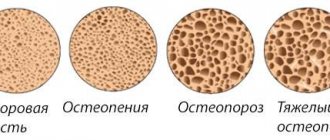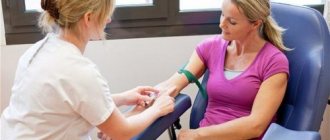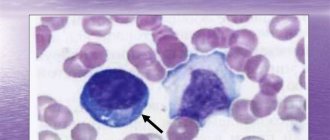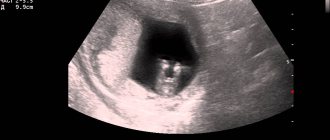Blood biochemistry
07/09/201801/24/2019 Chernenko A. L. 1979 Views sugar, diabetes mellitus
According to official WHO statistics, diabetes mellitus is one of the most common endocrine pathologies. In this regard, regular examinations of sugar levels are among the most important studies that allow timely identification of this pathology and initiation of comprehensive treatment.
The most informative test for suspected diabetes mellitus is the sugar curve.
The term sugar curve refers to a classic glucose tolerance test (glucose tolerance test or GTT).
GTT allows for a comprehensive assessment of the patient’s carbohydrate metabolism status. GTT allows us to identify not only diabetes mellitus (DM), but also a condition such as impaired glucose tolerance. Many experts consider impaired glucose tolerance as a prediabetic condition. That is, with timely identification of the causes of the development of impaired glucose tolerance and correction of blood sugar levels (special diet, normalization of body weight, etc.), it is possible to prevent the development of diabetes.
- 1 Indications for analysis
- 2 How to get tested for sugar curve
- 3 Sugar curve: preparation for analysis
- 4 How the analysis is carried out
- 5 Norm of the sugar curve of the glucose tolerance test
- 6 Sugar curve during pregnancy - normal values
- 7 Reasons for changes in blood sugar levels
- 8 Treatment of elevated glucose levels
What is the sugar curve
A glucose tolerance test (abbreviated GTT) is a laboratory test used by endocrinologists to determine the state of glucose tolerance, which is necessary to diagnose diseases such as prediabetes and diabetes. The study determines the patient's blood sugar levels on an empty stomach and after meals and physical activity. The glucose tolerance test is distinguished by the route of administration: oral and intravenous.
When carbohydrates enter the body, the amount of sugar in the blood rises after 10-15 minutes, increasing to 10 mmol/l. With normal pancreatic function, after 2-3 hours, sugar returns to normal - 4.2-5.5 mmol/l. An increase in glucose concentration after 50 years is not considered a normal manifestation of age. At any age, the appearance of such a sign indicates the development of type 2 diabetes mellitus. GTT is used to determine the disease.
When and who should do a glucose tolerance test?
Diabetes mellitus occurs due to impaired carbohydrate metabolism. Malfunctions in the functioning of the pancreas lead to insufficient production of the hormone insulin, the function of which is to absorb glucose into the body tissues and remove its excess.
Blood sugar levels are checked using laboratory tests. Sometimes it is enough to do a regular blood sugar test. When the glucose level is 3.3 mmol/l, a person is considered healthy and no additional tests are necessary. If the fasting plasma sugar level is 3.9-7 mmol/l or higher, other studies are necessary. One of these is a glucose tolerance test, which can be performed exclusively in laboratories of hospitals and clinics.
A glucose tolerance test is carried out in the presence of certain symptoms, namely:
- weakness, drowsiness, loss of strength;
- dizziness;
- thirst;
- rapid breathing;
- dryness, flaking or pigmentation on the skin;
- decreased vision;
- constant urge to urinate;
- irritability, anxiety;
- poor wound healing;
- joint pain;
- nausea or vomiting.
Those at risk for diabetes and those who are eligible for a glucose tolerance test include:
- close relatives of those who were or are suffering from diabetes;
- pregnant women;
- those who have recently suffered viral infections;
- people who are overweight and, conversely, very exhausted;
- those suffering from liver disease or kidney failure;
- patients with low levels of thyroid hormones;
- patients with cancer.
All treatment is selected individually by an endocrinologist. In case of impaired glucose tolerance, regular examinations by a doctor, normalization of body weight, diet, and dosed physical activity are recommended.
When the diagnosis of diabetes is confirmed, treatment is carried out according to the treatment protocols for the specified disease.
Glucose is the main source of energy necessary to maintain life. When its level in the blood is elevated, this indicates that not all of it is used by the body, metabolic processes are disrupted, all organs suffer, and their functions decrease. Nervous tissue and blood vessels are the most vulnerable.
The second “punishing sword” is glucose itself in its undigested form. Circulating through the vessels, it has a toxic effect on their walls, atherosclerosis develops, and blood circulation is impaired.
Against the background of pathological changes in diabetes, the following complications are characteristic:
- atrophy of the optic nerve and retina;
- vascular pathology - hypertension, heart attack, stroke, gangrene of the extremities;
- encephalopathy, neuropathy – damage to the central and peripheral nervous system;
- dystrophy of organs - kidneys, liver, heart.
Despite the danger of diabetes, modern medicine has the means to normalize blood glucose levels, prevent complications and maintain the quality of life of patients. A large role in this is played by accessible and timely testing - the glucose tolerance test, which you need to know and remember.
Indications for analysis
A diagnostic research method such as a glycemic curve is necessary to find out the concentration of sugar in the blood at different times and to know the body’s reaction to an additional load of glucose administration. In addition to people who have already been diagnosed with diabetes, GTT is prescribed in the following cases:
- if the patient's weight increases rapidly;
- sugar was detected in the urine;
- high blood pressure is constantly maintained;
- diagnosed with polycystic ovary syndrome;
- during pregnancy (if urine values, weight gain, and blood pressure are abnormal);
- with genetic predisposition (presence of relatives with diabetes).
- How to learn to whistle
- Treatment of bronchitis in adults
- French press for tea and coffee - how to choose and use
Why do they do the study with extra carbohydrates?
The test involves measuring blood sugar levels on an empty stomach. Within five minutes, the patient drinks a glass of warm water with glucose already dissolved in it. For an adult, 75 grams is enough, for a child - at the rate of 1.75 g per kilogram of body weight. Next, blood sugar levels are measured 30, 60, 90 and 120 minutes after the “sweet load”. Quite rarely they test after 2.5 and 3 hours. The data is displayed on a graph.
To construct a sugar curve, use a graph in two coordinate axes. The vertical axis displays sugar readings in increments of 0.1 or 0.5 mmol/l. On the horizontal, time intervals are indicated after taking the test for glucose tolerance.
Patients with type 1 and type 2 diabetes mellitus, pregnant women, and patients with polycystic ovary syndrome must take a glucose tolerance test (GTH). For preventive purposes, men and women in whose families there have been cases of insulin deficiency should prepare to check for carbohydrate metabolism disorders.
- high fasting sugar levels;
- metabolic syndrome;
- dysfunction of the pancreas, liver, pituitary gland, adrenal glands;
- overweight;
- thyroid diseases.
You need to measure glucose according to a certain scheme. Namely, the curves are plotted several times, and based on the results of these tests, the doctor or the patient himself makes a conclusion about how his body perceives this very glucose.
Typically, this test is prescribed for pregnant women, as well as people who have just been diagnosed with diabetes, or who are suspected of having this disease. Also, measuring blood glucose using a similar method is prescribed for female representatives who suffer from polycystic ovary syndrome. This is necessary in order to accurately determine how the body perceives sugar.
Doctors also always advise regularly using a glucometer for those who have blood relatives who have diabetes. Moreover, this must be done at least once every six months.
You need to understand that if a person does not know exactly what result indicates the possibility of developing a “sugar” disease, then the interpretation should be carried out by an experienced doctor. There are situations when the curve may differ only slightly from the norm, this indicates that the indicator is considered normal.
- Always control your weight and avoid overeating.
- Exercise regularly.
- Always eat only healthy foods and follow a healthy diet.
- Get tested regularly.
All these measures will help only at an early stage of changes in the body; otherwise, you will have to resort to medication, namely taking drugs that help lower blood sugar or injecting an analogue of human insulin.
Venous blood is used for the study. The analysis itself is performed using the enzymatic (hexokinase) method.
Before the test, fasting glucose is assessed using a glucometer. If a result is higher than 7.0 mmol per liter, a GTT test is not performed, but a simple blood sample is taken from a vein for glucose.
If a fasting result is below 7.0, the patient is given glucose to drink (the amount depends on the patient’s weight) and the results are assessed after two hours.
The normal sugar curve after 2 hours is less than 7.8 mmol per liter.
When receiving results above 7.8, but less than 11.1, a primary diagnosis is made - impaired glucose tolerance.
A result above 11.1 indicates that the patient has diabetes.
Analysis of the sugar curve during pregnancy is carried out in a similar way. After the fasting test, the pregnant woman is given glucose dissolved in 0.3 liters of water to drink and the results are assessed after two hours.
Indicators of normal sugar curve in pregnancy on an empty stomach:
- below 5.1 in the fasting level – normal pregnancy;
- above 5.1, but less than 7.0 – the development of gestational diabetes mellitus is likely;
- above seven - a manifestation of diabetes mellitus is likely.
In two hours:
- below 8.5 – normal pregnancy;
- above 8.5, but less than 11.0 – the development of gestational diabetes mellitus is likely;
- above 11.1 - diabetes mellitus is likely to manifest.
3 days before analyzing the curve, it is necessary to exclude physical activity, nervous tension, smoking and alcohol. If the patient is taking any medications, it is necessary to consult with the doctor in advance whether it is possible to stop taking them for a while.
The diet remains as usual, without any dietary restrictions. The last meal should be no later than 12 hours before taking the blood sugar test; you are allowed to drink water - clean drinking water, mineral water without gas.
You need to take 75 g of dry glucose and 200 ml of drinking water with you to make a fresh solution immediately before use. The amount of glucose and the concentration of the solution may be different; this is determined by the doctor individually.
Preparing for analysis
The study does not require preliminary special preparation or changes in habitual lifestyle, since exclusion or restriction of high-carbohydrate foods in food can lead to incorrect results. During the three days preceding the test, you should not change your diet; the use of medications must be agreed with your doctor. To ensure the reliability of the research results, it is assumed that you are in a calm state, smoking and physical exertion are prohibited. During menstruation, it is better to reschedule the tests.
Recommendations from medical experts
To ensure that the procedure does not give the desired result, namely, the sugar curve shows the norm, you should properly prepare for the study. For example, in order for the construction of sugar curves to give the correct result, it is very important to exclude all foods that contain sugar at least a few days before such manipulation. After all, these products have a negative impact on the result.
It is also important to lead a normal lifestyle about three days before the target date. Experienced doctors always advise people who are about to undergo a similar procedure not to take medications that may affect the result. True, unless this limitation affects human viability.
It is important to find out in advance the work schedule of the clinic where the study will take place so as not to be late for the appointed time.
It should also be remembered that any emotional change may also affect the results of this study. Therefore, it is better to avoid stress and other situations.
It is also important that the level of glucose in the blood, which was shown by biochemistry or a glucometer, is compared with other characteristics of the person’s condition.
And only as a result of a comprehensive examination can we say that a particular patient has diabetes.
How to take it
The patient donates blood for a sugar curve from a vein or from a finger, depending on the type of sampling, its own standards have been approved. The diagnosis requires repeated blood donation: the first time the blood is taken on an empty stomach, after a 12-hour fast (only water is allowed). After which you need to take glucose dissolved in a glass of water. It is advisable to carry out a glycemic curve test every half hour for two hours after taking a carbohydrate load. However, in practice, one analysis is more often carried out 0.5-2 hours after consuming the glucose solution.
What it is?
The glucose tolerance test, otherwise known as the sugar curve, is an additional laboratory method for testing sugar. The procedure takes place in several stages with preliminary preparation. Blood is repeatedly taken from a finger or a vein for testing. A graph is built based on each fence.
What does the analysis show? It shows doctors the body’s reaction to a sugar load and demonstrates the characteristics of the course of the disease. GTT monitors the dynamics, uptake and transport of glucose to cells.
A curve is a graph that is plotted point by point. It consists of two axes. Time intervals are displayed on the horizontal line, and sugar levels on the vertical line. Basically, the curve is built at 4-5 points with an interval of half an hour.
The first mark (on an empty stomach) is located below the others, the second (after exercise) is higher, the Third (load after an hour) is the culmination point of the graph. The fourth mark indicates a decline in sugar levels. It should not be located below the first one. Normally, the points of the curve do not have sharp jumps or breaks between each other.
Results depend on many factors: weight, age, gender, health status. The interpretation of GTT data is carried out by the attending physician. Timely detection of abnormalities helps prevent the development of the disease through preventive measures. In such cases, weight correction, nutrition and the introduction of physical activity are prescribed.
How to dilute glucose for sugar analysis
The test will require glucose, which you must take with you, since the solution must be prepared immediately before use. To dissolve, you need clean still water. When referring for research, the doctor determines the required concentration of the solution for the procedure. So, for a one-hour test, 50 grams of glucose are taken, for a 2-hour test - 75 grams, for a three-hour test - 100 g. Glucose is diluted in a glass of boiled or still mineral water. It is allowed to add a little lemon juice (citric acid crystals), since not everyone can drink very sweet water on an empty stomach.
- How to make pancakes
- Plum pie with kefir - tasty and quick. Plum pie recipes
- How to cook pasties at home. Step-by-step recipes for dough and filling for chebureks with photos
Types of glucose tolerance test
There are several types of tests:
- oral (OGTT) or oral (OGTT)
- intravenous (IGTT)
What is their fundamental difference? The fact is that everything lies in the method of introducing carbohydrates. The so-called “glucose load” is performed a few minutes after the first blood draw, and you will either be asked to drink sweetened water or be given a glucose solution intravenously.
The second type of GTT is used extremely rarely, because the need to introduce carbohydrates into the venous blood is due to the fact that the patient is not able to drink sweet water himself.
This need does not arise very often. For example, with severe toxicosis in pregnant women, a woman may be asked to carry out a “glucose load” intravenously. Also, in those patients who complain of gastrointestinal disorders, subject to a detected malabsorption of substances in the process of nutrient metabolism, there is also a need for forced injection of glucose directly into the blood.
The following patients who may have been diagnosed or noticed the following disorders can receive a referral for testing from a therapist, gynecologist or endocrinologist:
- suspicion of type 2 diabetes mellitus (in the process of diagnosis), in the actual presence of this disease, in the selection and adjustment of treatment for “mellitus disease” (when analyzing positive results or lack of treatment effect);
- type 1 diabetes mellitus, as well as during self-control;
- suspicion of gestational diabetes or its actual presence;
- prediabetes;
- metabolic syndrome;
- some malfunctions in the functioning of the following organs: pancreas, adrenal glands, pituitary gland, liver;
- impaired glucose tolerance;
- obesity;
- other endocrine diseases.
The test performed well not only in the process of collecting data for suspected endocrine diseases, but also in self-monitoring.
For such purposes, it is very convenient to use portable biochemical blood analyzers or glucometers. Of course, at home it is possible to analyze exclusively whole blood. At the same time, do not forget that any portable analyzer allows for a certain percentage of errors, and if you decide to donate venous blood for laboratory analysis, the indicators will differ.
To conduct self-monitoring, it will be enough to use compact analyzers, which, among other things, can reflect not only the level of glycemia but also the volume of glycated hemoglobin (HbA1c). Of course, a glucometer is somewhat cheaper than a biochemical express blood analyzer, which expands the possibilities of self-monitoring.
Not everyone is allowed to take this test. For example, if a person:
- individual glucose intolerance;
- diseases of the gastrointestinal tract (for example, there was an exacerbation of chronic pancreatitis);
- acute inflammatory or infectious disease;
- severe toxicosis;
- post-operative period;
- the need for bed rest.
Interpretation of results
When assessing indicators, factors influencing the result are taken into account, and a diagnosis of diabetes cannot be made based on one test alone. The outcome of the glycemic curve is influenced by the patient’s bed rest, problems with the gastrointestinal tract, the presence of tumors, and infectious diseases that impair the absorption of sugar. The result of the glucose tolerance test significantly depends on the use of psychotropic, diuretic drugs, antidepressants, morphine, also caffeine and adrenaline. Distortion is also possible if strict blood collection instructions are not followed in the laboratory.
Research stages
Below we describe the steps of how a glucose tolerance test for sugar during pregnancy is carried out with the construction of a curve.
- The patient comes to the medical facility strictly on an empty stomach and in the first half of the day;
- A sample is taken from the patient for a pregnancy glucose test;
- After this, a “sugar load” is done - it is necessary to dilute 200–250 ml of water with glucose in a volume of 75 ml;
- Blood is taken again half an hour after the patient drinks glucose for the sugar curve;
- After another half hour, blood is drawn again;
- After this, two more samplings are carried out with an interval of 30 minutes, i.e., one and a half and 2 hours after consuming the load;
- This completes the test for glucose tolerance during pregnancy.
Data from the glucose tolerance test are deciphered in the laboratory. The indicators of four blood samples are the four points along which the curve is plotted. Based on this, the doctor determines whether there is impaired glucose tolerance during pregnancy.
In some cases, the sugar test for glucose tolerance is carried out in more detail. More blood measurements are taken or over a shorter period. This is done in rare cases and for special indications.
Normal sugar curve
A sugar load is necessary to identify hidden, possible metabolic disorders in the body. The results standards are established depending on the method of sampling - from a vein or from a finger:
| Body condition | Blood concentration, mmol/l | |
| deoxygenated blood | capillary | |
| Normal | up to 6.10 | up to 5.50 |
| Prediabetes | 6,10-7,0 | 5,50-6,0 |
| Impaired glucose tolerance behavior | 7,0-11,1 | 6,0-7,8 |
| Diabetes | > 11,1 | > 7,8 |
| The analysis is not performed if the first sample is taken on an empty stomach (probability of hyperglycemic coma) | 11,1 | 7,8 |
What results should be
Even with the abolition of all provoking factors, minor deviations may appear. When deciphering the analysis values, it is necessary to take into account the general condition of the patient and the presence of diseases that interfere with normal carbohydrate metabolism: problems with insulin, malignant tumors, previous infectious diseases. A flat sugar curve indicates the presence of hypoglycemia - a pathologically low level of glucose that requires special therapy.
The normal blood test level can vary from 3.88 to 5.5 mmol/l, and a reading of 5.5 -6 mmol/l indicates prediabetes. When the test result is 6.1 mmol/l - 7 mmol/l, doctors diagnose impaired glucose tolerance, diabetes mellitus.
The norm for glucose levels, which appears two hours after the exercise, is 7.8 mmol/l. If the result reaches 11 mmol/l, the diagnosis of diabetes mellitus is confirmed. When blood is drawn from a vein, up to 8.6 mmol/l is considered normal. A woman’s blood sugar levels are identical to those of men, but do not coincide with children’s standards.
It is important to remember that when the fasting test result is above 8 mmol/l, then there is no need to carry out a glucose load, since diabetes mellitus is obvious.
The results of a glucose tolerance test should only be interpreted by an endocrinologist. When deciphering the analysis, they take into account: gender, weight, age, lifestyle of the patient, concomitant diseases.
The sugar curve is built according to the following principle: the first point, the lowest, is the fasting sugar level, the second, higher than the first, is half an hour after exercise. The third point, even higher, is considered the pinnacle of research. The normal sugar curve is when, after an hour, glucose begins to decrease significantly.
If the sugar curve deviates slightly from normal values, it is extremely necessary to adhere to a balanced diet, the basis of which is the consumption of foods low in carbohydrates. Dietary nutrition will help control weight, and therefore blood sugar levels. Constant moderate physical activity has a positive effect on sugar levels.
So, if the preparation for the analysis was at the proper level, then the results will show reliable information. To correctly assess the indicators, you should know from which area the sampling was carried out.
By the way, it should be noted that most often, such a study is carried out for type 2 diabetes or when the patient suspects that he has such a disease. In type 1 diabetes, such an analysis is pointless. Indeed, in this case, the sugar level in the human body is regulated with the help of insulin injections.
If we talk about specific numbers, it should be noted that ideally the result should not exceed 5.5 or 6 mmol per liter if the sample was taken from a finger, as well as 6.1 or 7 if the blood was taken from a vein. This, of course, is the case if the patient managed to properly prepare for this manipulation.
If a blood sugar test is performed with a load, then the readings should be within 7.8 mmol per liter from a finger and no more than 11 mmol per liter from a vein.
Experienced specialists understand that situations in which the fasting test result showed more than 7.8 mmol from the finger and 11.1 mmol from the vein indicate that if a glucose sensitivity test is subsequently carried out, the person may develop a glycemic coma.
Of course, you need to prepare for all these procedures in advance. It is better to first visit an endocrinologist and inform him of your concerns and intention to undergo such a test. You should also always inform before prescribing this procedure about any chronic diseases or pregnancy if the woman is in an interesting position.
It is best to take such an analysis several times over a short period of time. Then there is a high probability that the results will actually be correct and, based on them, a current treatment regimen can be prescribed. And as mentioned above, you need to try to avoid stress and lead a healthy lifestyle.
Information on diagnostic methods for diabetes is provided in the video in this article.
Sugar level
Man
Woman
Enter your sugar or select your gender to get recommendations
Please indicate the man's age
Please indicate the woman's age
When assessing the results, the following indicators of sugar levels are taken into account:
- on an empty stomach;
- 1 hour after drinking the glucose solution;
- 2 hours after the carbohydrate load.
It matters where the blood for analysis is taken from. In peripheral or capillary blood from a finger, the sugar level is always 10-12% lower than in blood taken from a vein, due to its partial utilization by tissues.
| Body condition | Fasting glucose level in mmol/liter | Glucose level after 2 hours in mmol/liter | ||
| blood from finger | blood from a vein | blood from finger | blood from a vein | |
| norm | up to 5.5 | up to 6.1 | up to 7.2 | up to 7.8 |
| prediabetes | 5,6 – 6,0 | 6,2 – 7,0 | 7,3 — 11 | 7,8 – 11,4 |
| reduced tolerance | 6,1 – 7,8 | 7,1 – 11,1 | 7,4 — 11 | 7,9 – 12,0 |
| diabetes | more than 7.8 | more than 11.1 | 11.1 and above | 12.0 and above |
As for the intermediate analysis 1 hour after taking glucose, the sugar should increase by no more than 30%: from the finger - no higher than 7.1 mmol/l, from the vein - no higher than 7.9 mmol/l.
Sugar curve during pregnancy
The body bears a greater burden in pregnant women. At this time, exacerbations of chronic diseases or the emergence of new ones are possible. During the normal course of the process, the female body must produce insulin in quantities greater than in the normal state. Analysis of the sugar curve during pregnancy is carried out several times for greater accuracy. The research norm in this situation is slightly changed.
A glucose tolerance test will help the doctor determine the absence or presence of a problem, taking into account the characteristics of the woman’s body. If, after a sweet solution, the test transcript shows an increased sugar level, a repeat test is required to confirm the diagnosis of gestational diabetes. The disease is confirmed by the following indicators:
- fasting blood >5.3 mmol/l;
- one hour after exercise >10 mmol/l;
- after two hours >8.6 mmol/l.
How to prepare for the test?
3 days before analyzing the curve, it is necessary to exclude physical activity, nervous tension, smoking and alcohol. If the patient is taking any medications, it is necessary to consult with the doctor in advance whether it is possible to stop taking them for a while.
The diet remains as usual, without any dietary restrictions. The last meal should be no later than 12 hours before taking the blood sugar test; you are allowed to drink water - clean drinking water, mineral water without gas.
You need to take 75 g of dry glucose and 200 ml of drinking water with you to make a fresh solution immediately before use. The amount of glucose and the concentration of the solution may be different; this is determined by the doctor individually.
Possible deviations
If the test results show problems, it is recommended to donate blood again, observing the conditions very carefully: the day before and on the day of taking the test, avoid stress, physical activity, avoid alcohol, and medications. Treatment is prescribed if a deviation from the norm is noted in both cases. An analysis of pregnant women can be better interpreted by a gynecologist-endocrinologist who knows the characteristics of a pregnant woman’s body. The glucose tolerance test also reveals other diseases; for example, a decrease in the indicator after exercise indicates hypoglycemia.
The results of GTT also indicate the following possible states of the body:
- hyperfunction of the pituitary gland;
- the intensity of the thyroid gland;
- damage to the nervous tissue of the brain;
- disorders of the functioning of the autonomic nervous system;
- infectious and inflammatory processes;
- inflammation (acute, chronic) of the pancreas.
Causes of changes in blood sugar levels
Elevated glucose levels may indicate:
- SD;
- excess of counter-insular hormones;
- thyrotoxicosis;
- pathologies affecting the pancreas (pancreatitis, cystic fibrosis, etc.);
- chronic liver diseases;
- various nephropathies;
- acute stress;
- severe physical stress;
- myocardial infarction;
- the presence of insulin receptors.
Also, glucose levels may be elevated in chronic smokers.
A decrease in glucose levels may indicate:
- prolonged fasting, exhaustion, following a low-carbohydrate diet;
- impaired carbohydrate absorption in the intestine;
- chronic liver pathologies;
- hypothyroidism;
- hypopituitarism;
- various enzymopathies;
- postnatal hypoglycemia in diabetic fetopathy;
- insulinoma;
- sarcoidosis;
- blood diseases.
Test results, normal for diabetes and pregnancy
methods of testing blood and its components
Let’s say right away that the readings must be verified taking into account what kind of blood was analyzed during the test.
Both whole capillary blood and venous blood can be considered. However, the results do not vary to such a significant extent. For example, if we look at the results of a whole blood analysis, they will be somewhat less than those obtained in the process of testing blood components obtained from a vein (plasma).
With whole blood, everything is clear: they pricked the finger with a needle, took a drop of blood for biochemical analysis. For these purposes, not much blood is required.
With venous blood it is somewhat different: the first blood sample from a vein is placed in a cold test tube (it is better, of course, to use a vacuum tube, then unnecessary manipulations with preserving the blood will not be needed), which contains special preservatives that allow you to preserve the sample until testing itself. This is a very important stage, since unnecessary components should not be mixed with the blood.
Several preservatives are usually used:
- sodium fluoride at the rate of 6 mg/ml whole blood
It slows down enzymatic processes in the blood, and at this dosage practically stops them. Why is this necessary? Firstly, it is not for nothing that the blood is placed in a cold test tube. If you have already read our article on glycated hemoglobin, then you know that hemoglobin is “sugarified” under the influence of heat, provided that the blood contains a large amount of sugar for a long time.
Moreover, under the influence of heat and with actual access to oxygen, the blood begins to “deteriorate” faster. It oxidizes and becomes more toxic. To prevent this from happening, in addition to sodium fluoride, another ingredient is added to the test tube.
- sodium citrate (or EDTA)
It prevents blood clotting.
The tube is then placed on ice and special equipment is prepared to separate the blood into its components. Plasma is needed, to obtain it they use a centrifuge and, pardon the tautology, centrifuge the blood. The plasma is placed in another test tube and its immediate analysis begins.
All these machinations must be carried out quickly and within a thirty-minute interval. If the plasma is separated after this time, the test can be considered failed.
Next, regarding the further process of analyzing both capillary and venous blood. The laboratory can use different approaches:
- glucose oxidase method (norm 3.1 - 5.2 mmol/liter);
To put it quite simply and crudely, it is based on enzymatic oxidation with glucose oxidase, when the output is hydrogen peroxide. Previously colorless orthotolidine, under the action of peroxidase, acquires a bluish tint. About the number of pigmented (colored) particles. The more of them, the higher the glucose level.
- orthotoluidine method (norm 3.3 - 5.5 mmol/liter)
If in the first case there is an oxidative process based on an enzymatic reaction, then here the action occurs in an already acidic environment and the intensity of coloring occurs under the influence of an aromatic substance derived from ammonia (this is orthotoluidine). A specific organic reaction occurs, as a result of which glucose aldehydes are oxidized. The amount of glucose is indicated by the color saturation of the “substance” of the resulting solution.
The orthotoluidine method is considered more accurate; accordingly, it is most often used in the process of blood analysis during GTT.
In general, there are quite a few methods for determining glycemia that are used for tests, and they are all divided into several large categories: colorimetric (the second method we considered); enzymatic (the first method we considered); reductometric; electrochemical; test strips (used in glucometers and other portable analyzers); mixed.
Let us immediately divide the normalized indicators into two subsections: the norm of venous blood (plasma analysis) and the norm of whole capillary blood taken from a finger.
venous blood 2 hours after a carbohydrate load
| diagnosis | mmol/liter |
| norm | <7.8 |
| impaired glucose tolerance | 7.8 — 11.0 |
| diabetes | ≥11.1 |
Source: netdia.ru











